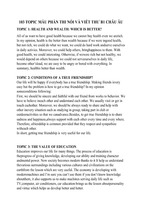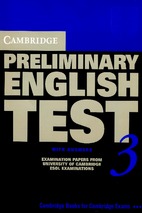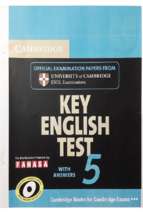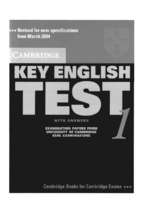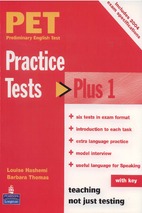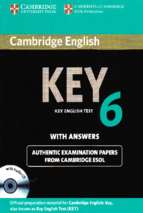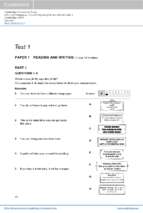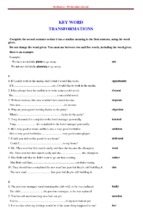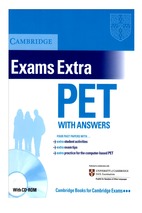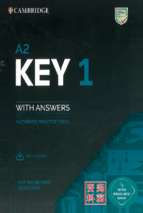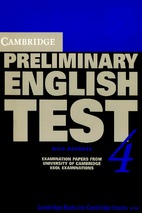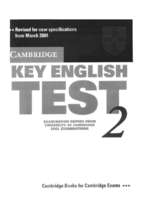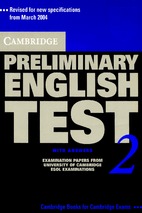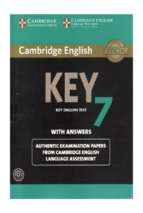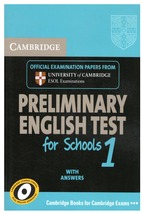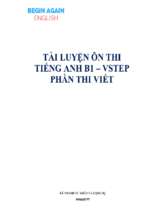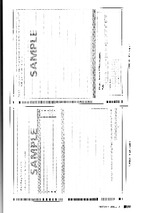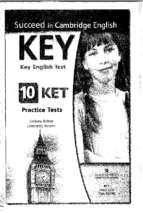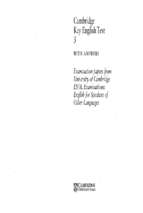VIETNAM NATIONAL UNIVERSITY
UNIVERSITY OF LANGUAGES AND INTERNATIONAL STUDIES
FACULTY OF POST-GRADUATE STUDIES
NGUYỄN THỊ VÂN ANH
GENDER REPRESENTATION THROUGH CONVERSATIONS
IN ENGLISH TEXTBOOKS 10, 11, 12
(Biểu hiện về giới thông qua các đoạn hội thoại
trong sách giáo khoa Tiếng Anh 10, 11, 12)
M.A MINOR THESIS
Field: English Linguistics
Code: 8220201.01
HÀ NỘI – 2021
VIETNAM NATIONAL UNIVERSITY
UNIVERSITY OF LANGUAGES AND INTERNATIONAL STUDIES
FACULTY OF POST-GRADUATE STUDIES
NGUYỄN THỊ VÂN ANH
GENDER REPRESENTATION THROUGH CONVERSATIONS
IN ENGLISH TEXTBOOKS 10, 11, 12
(Biểu hiện về giới thông qua các đoạn hội thoại
trong sách giáo khoa Tiếng Anh 10, 11, 12)
M.A MINOR THESIS
Field: English Linguistics
Code: 8220201.01
Supervisor: Dr. Lưu Thị Kim Nhung
HÀ NỘI – 2021
DECLARATION OF AUTHORSHIP
I hereby declare and confirm with my signature that the Master‟s thesis
entitled “Gender representation through conversations in English textbooks 10,
11, 12” is my own original work for the degree of Master of English Linguistics
under the guidance and supervision of Dr. Lưu Thị Kim Nhung. I have not used any
sources other than those listed in the bibliography and identified as references.
I further declare that no part of the paper has been submitted in any other
institutions for other degree or professional qualification.
Finally, I agree that my original paper should be kept and consulted in the
library for the purposes of study and research, in accordance with conditions
established by the library for the care, loan, or reproduction of the paper.
Hanoi, October 12th, 2020
Signature
Nguyễn Thị Vân Anh
i
ACKNOWLEDGEMENTS
I would like to express my sincere gratitude to my patient and dedicated
supervisor, Doctor Luu Thi Kim Nhung, who convincingly guided and encouraged
me to be professional and do the right thing even the road got tough. Her insightful
feedback did push me to sharpen my thinking. Without her invaluable support, the
thesis might not have been completed.
Special appreciations are given to Professors, Associate Professors, and
Doctors in Faculty of Post-Graduate Studies, University of International and
Languages Studies, who have delivered valuable lectures with useful knowledge of
English Linguistics. Their support and guidance during my studies are extremely
valuable.
Last but not least, I would like to send my deepest gratitude to my friends
and the members of my family, especially my dad and my husband, for their
patience and sympathy. Their encouragement when the times got rough is much
appreciated. It was a great comfort and relief to know that they are always there
for me, believe in me and support me whenever I need. My heartfelt thanks to all
of you.
ii
ABSTRACT
The present study explores gender representation through conversations in
English as Foreign language (EFL) textbooks used in Vietnamese high schools with
an emphasis on the visibility and the speech acts performed by male and female
speakers. Both quantitative and qualitative methods were employed in the study.
Specifically, AntConc software was applied to investigate the frequency of turns,
utterances, and speech acts produced by speakers in conversations. John Searle‟s
taxonomy (1975) was used in order to analyze the speech acts produced by the
speakers. The results revealed that males were more visible than females
considering both single-gender and mixed-gender conversations while as regards
mixed-gender conversations in particular, the number of turns of two genders are
nearly equal, and slightly more utterances were even uttered by female speakers
than male speakers. In terms of speech acts produced by two genders, male speakers
seem to be more knowledgeable and more powerful than females as making more
assertions, commands, and advice while females were represented to be more
dependent and more emotional than males when asking more questions for
information and using stronger exclamative adjectives.
Key words: gender representation, EFL textbooks, conversations, visibility,
speech acts
iii
LISTS OF TABLES
Table 3.1 Number of conversations conducted by male and female speakers in
English textbooks 10, 11, 12 ………………………………………………….........8
Table 4.1 Number of utterances uttered by male and female speakers in the singlegender and mixed-gender conversations in English textbooks 10, 11, 12 ..............275
iv
LIST OF FIGURES
Figure 4.1 Number of turns taken by male and female speakers in single-gender
conversations .............................................................................................................26
Figure 4.2 Number of turns taken by male and female speakers in mixed-gender
conversations .............................................................................................................26
Figure 4.3 Types of speech acts performed by male and female speakers in three
levels of English textbooks .......................................................................................33
Figure 4.4 Assertive speech acts produced by male and female speakers in the
mixed-gender conversations of English textbooks 10, 11, 12. .................................36
Figure 4.5 Directive speech acts produced by male and female speakers in the
mixed-gender conversations of English textbooks 10, 11, 12. .................................36
Figure 4.6 Commisive speech acts produced by male and female speakers in the
mixed-gender conversations of English textbooks 10, 11, 12. .................................37
Figure 4.7 Expressive speech acts produced by male and female speakers in the
mixed-gender conversations of English textbooks 10, 11, 12. .................................37
v
LIST OF PICTURES
Picture 3.1 Frequency of the characters‟ name in English textbooks 10, 11, 12 ......20
Picture 3.2 Total number of turns taken by male and female characters in
single-gender conversations and in mixed-gender conversations then were
calculated manually. ................................................................................................19
Picture 3.3 Illocutionary verbs used were noted down and then added next to the
symbol SPM/SPF in the Search Term so that the occurrence of the speech acts
would be calculated. ..................................................................................................22
Picture 3.4 Searching for the speech acts performed by male/female characters. ....22
vi
TABLE OF CONTENTS
DECLARATION OF AUTHORSHIP .................................................................... i
ACKNOWLEDGEMENTS ..................................................................................... ii
ABSTRACT ............................................................................................................. iii
LISTS OF TABLES ................................................................................................ iv
LIST OF FIGURES ..................................................................................................v
LIST OF PICTURES .............................................................................................. vi
CHAPTER 1. INTRODUCTION ............................................................................1
1.1. Rationale to the study ...........................................................................................1
1.2. Purpose of the study .............................................................................................3
1.3. Research questions ...............................................................................................3
1.4. Significance of the study ......................................................................................4
1.5. Scope of the study ................................................................................................5
1.6. Structure of the study ...........................................................................................5
CHAPTER 2. LITERATURE REVIEW ................................................................6
2.1. Discourse ..............................................................................................................6
2.2. Discourse analysis ...............................................................................................7
2.3. Discourse and gender ...........................................................................................8
2.3.1 Turns and Utterances........................................................................................10
2.3.2. Speech acts ......................................................................................................10
2.5. Previous research on gender in textbooks ..........................................................12
CHAPTER 3. METHODOLOGY .........................................................................17
3.1. Corpus ................................................................................................................17
3.2. Analytical framework.........................................................................................19
CHAPTER 4. FINDINGS AND DISCUSSION ...................................................23
4.1. Number of turns and utterances produced by male and female speakers in
single-gender and mixed-gender conversations ........................................................23
4.1.1. Number of turns in single-gender and mixed-gender conversations ..............23
vii
4.1.2. Number of utterances in single-gender and mixed-gender conversations ......27
4.2.3. Discussion .......................................................................................................29
4.2. Speech acts performed by male and female speakers in single-gender and
mixed-gender conversations......................................................................................31
CHAPTER 5. CONCLUSION ...............................................................................42
5.1. Summary of major findings ...............................................................................42
5.1.1. Number of turns taken by male and female speakers in single-gender and
mixed-gender conversations......................................................................................42
5.1.2. Number of utterances produced by male and female speakers in single-gender
and mixed-gender conversations ...............................................................................42
5.1.4. Speech acts performed by male and female speakers in single-gender and
mixed-gender conversations......................................................................................43
5.2. Implications for professional practice ...............................................................44
5.2.1. Pedagogical practice........................................................................................44
5.2.2. Implications for material writers and publishers.............................................45
5.3. Limitations and suggestions for further studies .................................................46
5.4. Concluding remarks ...........................................................................................46
REFERENCES ........................................................................................................49
viii
CHAPTER 1. INTRODUCTION
1.1. Rationale to the study
The reforms in 1986 bridged Vietnam with foreign countries around the
world despite the differences in political systems. As a result, not only was the
market-oriented economy adopted but the number of English-speaking visitors
along with products and advertisements in English coming to Vietnam also
increased, which was responsible for the expansion of English. For more than 30
decades, English has become more popular in Vietnam. After the first National
Strategy for Foreign Language Teaching and Learning throughout All Levels of
Education (MOET, 1994, cited in Do, 1999: 30), Vietnam has been through changes
in teaching and learning English in order to meet the need for wider international
integration in modern society. English was officially assigned as a separate subject
taught for students from grade 6 and since 2002, several schools decided to include
English as an optional subject in the curriculum for students at grade 3 (age 8), or
even grade 1 while it remains compulsory for students from grade 6 to grade 12. A
majority of Vietnamese students have accessed to English language from an early
age in recent decades.
Woodward (1997) claims that a textbook is a ubiquitous part of most
classroom instruction. Teachers and students definitely can use textbooks as a
valuable resource in the classroom and also use them to self-study at home with
the relatively sufficient knowledge provided. In the EFL context, textbooks even
play a more important part in teaching and learning as they are believed to be
“the visible heart of ELT program” (Sheldon, 1988, 237). The quality of
textbooks, thus, is clearly responsible for students‟ effectively gaining the
knowledge. Furthermore, in countries where English is taught as a foreign
language and approaching native English speakers or materials in English is not
easy, English textbooks used in schools may become the major or even the only
source of input with proper language use for students to learn and practice the
language both inside and outside of class.
1
ELT textbooks are designed with a variety of texts and genres including
different types of discourse in both written and spoken form, which helps learners
be exposed to authentic communication and be able to obtain the appropriate uses of
language in various contexts. Besides, Jane Sunderland (2002) pointed out that
foreign language textbooks are characteristically densely populated with people
who are not only in social relationships with each other, but also those who
continually interacts verbally with each other. That is to say, language presented in
textbooks can be widely used in various conversations of everyday life in reality.
Apart from the language, the knowledge of the outside world is also adopted by
students through textbooks because this kind of material “represents the everyday
for children” (Kereszty, 2009).
One of the issues presented in textbooks that has considerable influence on
textbooks users is gender. Gender does not only concern the physical difference
between having two X chromosomes or having one X and one Y chromosomes but
also something people “bring into being through their practices" (Kendall,
2007:126). It is undeniable that biological traits impose the differences in
capabilities and dispositions of two genders. For example, the higher level of
testosterone is said to be responsible for males‟ aggressiveness while women‟s
emotional inclination results from the lack of lateralization in their brains. However,
the gender identity cannot be freely determined by their initial biological
endowment. Yule (2006) pointed out that each individual learns how to become a
boy or a girl and acquires characteristics which are considered masculine or
feminine. In other words, gender is culturally and socially constructed. Masculinity
and femininity are acquired by individuals not only through the socialization
process (Tannen, 1994) but also through the expectations in certain contexts in
which what a man or a woman should be like are emphasized (Mills & Mullany,
2011). Every society has its own norms and values, therefore, individuals may
already have a view of gender from their society‟s perspective (Cameron,
1992:161). They differ in the way they behave and use language due to the
2
differential treatment they receive from socialization agents in which school plays a
crucial part.
In short, textbooks and gender have close connection to each other.
Textbooks have big influence on learners‟ gender. Therefore, gender representation
in the textbooks need to be taken into consideration.
1.2. Purpose of the study
The aim of this study is to analyze how genders are represented in the
English textbooks 10, 11, 12 published by Vietnam Educational Publishing House
(VEPH) in collaboration with one of the world leading publisher, Pearson
Education in 2015 by examining the conversations in English textbooks. Textbooks
are the major source for teaching and learning in most of schools in Vietnam.
Therefore, the provision of language and the messages conveyed in textbooks, in
which gender is involved, play important roles in influencing learners‟ language
usage or even students‟ behaviors. Identifying the gender representation in
textbooks might make valuable contribution to appropriate adaptation while using
the textbooks. In this study, researcher wants to investigate the frequencies of turns
and utterances produced by male and female speakers so that the visibility of two
genders, which, according to Cambridge Dictionary, is the degree to which
something is seen or known about in public, is identified. The difference in number
of turns and utterances taken by males/females depicts the difference in these two
genders‟ visibility while communicating. The visibility of male and female speakers
partly implies the opportunities the students have to practice English both inside and
outside class. Besides, investigation of speech acts produced by male and female
speakers is also very important in analyzing gender representation in textbooks.
Some inferences about male and female speakers‟ characteristics can be drawn
basing on differences in speech acts performed by these two genders.
1.3. Research questions
As mentioned above, the purpose of this study is to detect the gender
representation in terms of turns and speech acts employed by male and female
3
characters through the conversations inset of English textbook 10, 11, 12. In order
to achieve the aim of the study, the following questions were addressed:
1. How many turns and utterances are produced by male and female
characters in conversations in English textbooks 10, 11, 12? Which gender
possesses more turns and utterances overall?
2. What speech acts are frequently performed by male and female characters
in the conversations in English textbooks 10, 11, 12? What characteristics of male
and female speakers may be inferred basing on identified speech acts?
1.4. Significance of the study
The present study may contribute to investigation of language and gender
and the research of gender representation in textbooks. In addition, the result of the
study may help to draw some important implications for teachers, students and even
the textbook writers in order to improve English language teaching and learning in
Vietnam.
A number of studies have been conducted to evaluate the quality of the
resources for English language input in Vietnam but studies concerning gender
representation in textbooks and stories are inappreciable. With analysis of the turns
taken by male and female characters and the illocutionary acts that males and
females perform in both single-gender and mixed-gender conversations whereby the
distribution of turn-taking and also the characteristics of males and females are
represented, the study has made significant contribution to language and gender
research field.
The awareness of unbalanced representation of male and female speakers if any
may prompt the textbook users including teachers, students or even parents to
determine the appropriate use of the conversations such as assigning the roles and
changing the name of the characters, etc.. Adaptation will make the learners possible to
achieve the objectives of the unit and acquire the language items their best.
Implications for textbooks writers and publishers are undeniable. The result
of the study will show the representation of gender in textbooks regarding the
4
visibility and the speech acts produced by two genders, which helps textbooks
writers and publishers reflect themselves in writing and publishing textbooks.
Changes in future textbooks may be needed if the gender is asymmetrically
represented.
1.5. Scope of the study
This study will focus on investigating representation of gender regarding the
number of turns and utterances taken as well as the speech acts produced by male
and female speakers through conversations in English textbooks 10, 11, 12. The
scope to the study is limited to 59 conversations, including 14 single-gender and 45
mixed-gender conversations in three levels of English textbooks used in high
schools. The other types of text such as passages, narratives, stories, etc. will be
excluded from the study.
In terms of turns and utterances taken by male and female speakers, the turns
and utterances will be noted manually and then counted by software AntConc.
Besides, the speech acts are classified by Searle‟s Taxonomy of Illocutionary acts,
then the speech acts are also counted using AntConc software.
1.6. Structure of the study
This thesis consists of five chapters. Chapter 1 provides the background to
the study and introduces the needs for the research, the aims, research questions,
scope to the study as well as the organization of the study. Chapter 2 provides a
review of basic concepts and relevant knowledge to the study. In addition, previous
studies are also listed. In Chapter Three, an overview of the corpus and analytical
framework used for the study are presented. Chapter 4 represents the results of the
study and the discussions of the findings are also included. The last chapter, Chapter
5 summarizes the major findings, some implications for the professional practices.
In this chapter, the limitations of the study and some recommendations for further
studies are also presented.
5
CHAPTER 2. LITERATURE REVIEW
In this chapter, the researcher will discuss some published information
regarding discourse and discourse analysis. In addition, previous studies on
relationship between discourse and gender as well as gender in textbooks are taken
into consideration. The chapter also mention a review of writings on turns,
utterances and speech acts taken by speakers in conversations.
2.1. Discourse
Discourse
originates
from
the
word
“discursus”,
which
means
“conversation” according to Dictionary of Medieval Latin. Since the 20th century,
the definition of discourse has witnessed important changes. Stubbs (1983) viewed
discourse as “language above the sentence or above the clause”.
In 1993, Nunan
asserted that discourse meant “a stretch of language consisting of several sentences
which are perceived as related in some way”. Sharing quite similar ideas of
discourse to Nunan and Stubbs, Fillingham (1993) defined discourse as anything
written or said or communicated using signs. Discourse, in these ways of defining,
is conceived purely a series of sentences or utterances connected together. However,
some other linguists offer different definitions of discourse. Coulthard (1977:7)
argues that discourse is not merely composed of “grammatically well-formed
utterances or sentences”. Moreover, it is seen as “chunks of language in actual use”.
People do not only produce discourse to just write or just talk but they also use
discourse purposively. This view is supported by Foucault who defines discourse as
“systems of thoughts” that consist of “ideas, attitudes, and courses of action, beliefs,
practices that systematically construct the subjects and the worlds of which they
speak” (Lessa, 2006: 285). In addition, vann Leeuwen (2008 : 6) sees discourse as
social cognitions, socially specific ways of knowing social practices”. To put it
simply, discourse helps to bridge our personal worlds to the social worlds. It
provides readers and listeners ideas about the world they are living in, which in
certain conditions can be turned into common truths and finally these truths may
construct our perceptions about the world around us. Discourse may be defined in
6
various ways but in this paper, the researcher will follow the definition of discourse
that discourse is the language formulated for actual uses.
2.2. Discourse analysis
The variety of discourse definitions leads to numerous views on analyzing
discourse. Harris (1952) observes that language “does not occur in stray words or
sentences but in connected discourse”. He also tries to discover the connection
between sentences by applying the tools of sentence grammar such as segmentation
and substitution. Besides, he also indicates another approach to discourse analysis
that is the correlation between culture and language. Although such analysis is not
taken into further consideration by Harris, the idea of correlating discourse of a
person, social group, etc. has been later developed by Halliday and Hasan. They
claim that the coherence of a discourse is created with the certain lexical and
grammatical choices regard to situational contexts (1976). However, no specific
apparatus has been built to clarify this coherence.
Showing the differences in the approaches to discourse analysis, Labov
(1970) points out that “there are some areas of linguistic analysis in which even the
first steps towards the basic invariant rules cannot be taken unless the social context
of the speech event is considered”. The analysis of discourse in Labov‟s viewpoint
is connected to social actions, which is quite similar to what Brown and Yule
(1983)‟ conclusion that study of discourse is the study of language in use. Simply
talking, discourse analysis involves the analysis of language above the sentence, in
situational and cultural context. Basing on two functions of language, on the one
hand, interactional and transactional, the discourse analysts may adopt different
approaches to identify whether the language is used to convey factual or
propositional information or to negotiate role-relationships, peer-solidarity, or
saving-face of both speaker and hearer (Brown & Yule, 1983). On the other hand,
the investigation of contents revealed through language is not only the focus of
discourse analysis regarding Jones‟ paper, “The Role of Discourse Analysis in
Devising Undergraduate Reading Programme in EST (1976). He mentions four
7
units set up in discourse : plan, stages, moves, and acts. A plan covering the whole
text is composed of two or more stages like “Problem Identification” and “Solution
Presentation”. A stage comprises of two or more Moves such as “Problem
Deduction” and “ Problem Amplification”. A move is made up of Acts such as
“Ascription, Exemplification, Differentiation and Justification”. Act, then is
corresponding to a sentence. In this study, the researcher concerns two different
approaches to discourse analysis. Both language itself and the function of language
are taken into account. The dialogues in which the turns taken by the male and
female characters in English textbooks 10, 11, 12 will be analyzed and counted to
find out males or females have more opportunities to practice English. Besides, the
speech acts employed by male and female characters are also interpreted to detect
the different gender identities expressed.
2.3. Discourse and gender
According to the perspective on natural language of Noah Chomsky (1959),
a language is a natural object, a component of the human mind. However, it is not
simply the physical representation of the entities in the brain but it also reflects the
mind of human beings. This means people will produce and understand different
expressions basing on what they have had experiences of previously. Therefore,
language in use, which is understood as discourse; definitely partly originate from
their social roles including gender as one of the determinative elements. To put it
simply, language users, and more specifically, individuals use discourse to portray
themselves and conversely their identities are depicted.
Since the 1970s, language and gender have become a research field that
attracted special attention from scholars around the world. Lakoff in Language and
the Woman’s Place (1975) indicated that woman‟s language has its foundation the
attitude that women are marginal to the serious concerns of life, which are
preempted by men”. He pointed out that women use a large set of words specific to
their interests, ask more questions and use more tag questions as well as rising
intonation in statement context. Marry Haas (1994) investigated men‟s and
8
women‟s speech in Koasati identified the differences in the phonological and
morphological features. Considering the utterances produced by men and women,
Holmes (1992) detected that women‟s talk is often associated with effective
functions such as expressing emotions, maintaining social relations and men‟s talk
conversely is associated with referential/ instrumental functions which are related to
conveying information or establishing facts. It can be inferred that gender has an
influence on the language uses in almost all aspects such as phonology, lexical
choice, syntax, etc..
On the other side, gender is represented through language. Stuart Hall
(1997:15) defined representation as “using language to say something meaningful
about, or to represent, the world meaningfully, to other people”. It is the way that a
person is shown or described by their language using; specifically, through their
talking and writing about something (Montgomery, 1995). Representation of gender
can be found in spoken, written texts and visual illustrations. In the two first form of
discourse, the researcher can consider the lexical choices; for example,
nouns/pronouns, verbs, adjectives; clause and clause complex such as “transitivity”,
which means the passive or active construction of the clause (Montgomery, 1995;
Vann Leeuwen, 2008). To be more specific, in order to convey one message in
which the boy is the actor, the girl is the goal and help is the material process, the
clause can be “the girl was helped by the boy”. In the sentence, the boy and the girl
were assigned an agent and a patient respectively. Additionally, the occurrences of
male and female in the text or illocutionary acts performed by them in the discourse
also describe their being.
Most simply, Pearson et al (1991) indicated that the honorific titles
addressing males and females are Mr. and Ms respectively. However, regarding
the marital status of a woman, people may use Mss. or Mrs while there is only
one option to address men despite the fact that they are married or not. In
addition, another difference mentioned is men and women who have never got
married are called distinctively (p94). While men are referred to as “bachelor”,
9
people use the term “old maid”. Although the new term “bachelorette” is
becoming more popular, it stems from the male version (p99). The similar word
pairs can easily be found in language use to address male and female like
governor- governess; master- mistress; hero-heroine, etc.. In broader research
field where identities are characterized through discourse, there have been a
large number of studies conducted. Speakers and writers can choose the
language to represent males and females differently. In this study, conversations
in English textbooks 10, 11, 12 were interpreted to figure out the manifestation
of male and female character‟s identity.
2.3.1 Turns and Utterances
Conversation analysis has been pioneered by Harvey Sacks, a sociologist,
since the 1960s. Conversation analysis studies the methods by which the speakers
are oriented to employ when structuring the conversation- social action through the
talks. One of the domains of research within conversational analysis is turn-taking.
Sacks et al. (1974) claimed that turn-taking for conversations can be built in various
ways depending on the types of conversations. It is ubiquitous and can be noticed in
debates, interviews, speeches, conferences, talk shows, formal and informal mode
of conversation. Sacks et al (1974) provided some rules for organizing the turns
taken in a conversation by groups. The turn taking is a process in which the turns
are allocated for the participants. The current participant talks then stops and has
rights to select the next one to speak. There is a time gap between turns but it is only
a few fractions of a second and one party speak or only one turn is taken at a time
during the conversation. One speaking turn is composed of one or more utterances
that represent the contribution of speakers in a conversation (Laver, 1994: 116). An
utterance is “any stretch of talk” constructed by one person, before and after which
there is silence on part of that sentence. It is the use of a piece of language such as a
sequence of sentences, or a single phrase or even a single word.
2.3.2. Speech acts
Speech act, the speaker‟s intended meaning in an utterance (Yule, 2006) has
greatly developed from the work of linguistic philosophers (Brown & Yule, 1983)
10
- Xem thêm -


